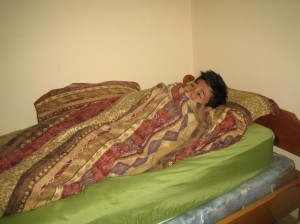Leptospirosis is considered as an uncommon bacterial disease brought about by the Leptospira bacteria. Humans can acquire the condition by ingesting contaminated food or water or via contact with contaminated water, soil or food. Remember that soil, water and food can become contaminated if mixed with animal urine that contains the bacteria.
The animals that can become infected with Leptospira include domestic animals such as pigs, cows, dogs and horses. Even rodents and other wild animals can become infected and contaminate bodies of fresh water.
What are the indications?
The indications of leptospirosis arise within 2-26 days after being exposed to the Leptospira bacteria. In some instances, there are no symptoms of infection. If the symptoms arise, they can range from moderate to serious and even life-threatening.
The usual symptoms include the following:

- Fever
- Fatigue
- Sore throat
- Cough
- Headache
- Aches and pains
Other symptoms that can arise might be psychological in nature such as depression or behavioral changes. In uncommon instances, other vague symptoms might arise such as joint and muscle pain, abdominal pain, light sensitivity, red eyes, enlarged lymph nodes and rashes.
Risk factors
Leptospirosis can affect any age group but there are various factors that increases the risk such as:
- Occupations that involves exposure with animals such as ranching, farming, fishing and veterinary industries.
- Engaging in some outdoor water sports or activities such as boating, swimming, fishing, water skiing or wading in contaminated fresh water
- Residing in warm or tropical climates especially in developing countries where water is not properly treated
Management
Leptospirosis is managed using antibiotics. These medications work by eliminating bacteria or preventing them from reproducing and spreading. There are different types of antibiotics that can effectively treat specific forms of bacteria.
The commonly used antibiotics for leptospirosis include:
- Ampicillin
- Amoxicillin
- Penicillin
- Ceftriaxone
- Doxycycline
The treatment involving oral antibiotics is started early. If treatment is started right away, the prognosis is generally good. In severe cases, hospitalization that involves intravenous antibiotics might be required. Other treatment measures include the following:
- Proper nutrition
- Increased intake of fluids
- Over-the-counter medications for fever, nausea and headache
- Adequate rest
